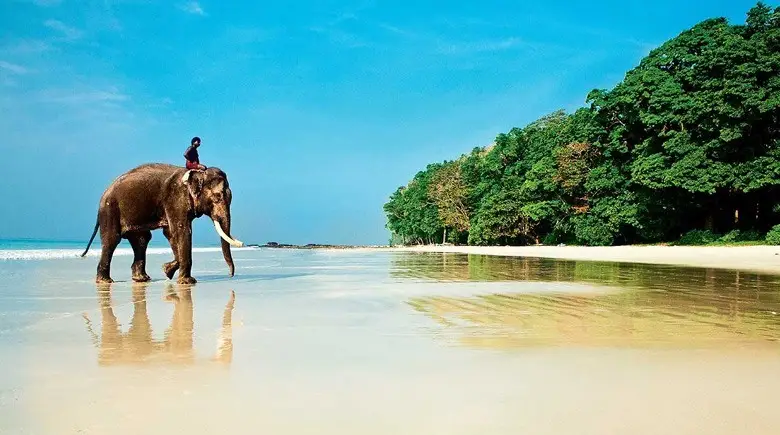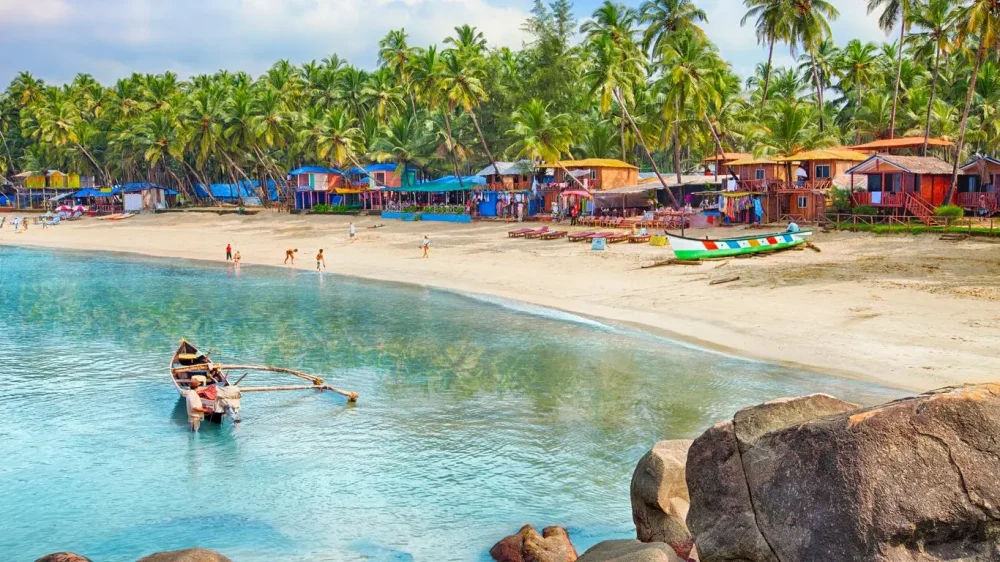The Indian state is associated with palm trees, the ocean, and freedom. However, a trip to the region is not just a beach vacation, but also an excellent opportunity to fill your suitcase with unique items. Tourists face a difficult choice: what to bring from Goa as a memory and what gifts to choose for loved ones. Markets, bazaars, and shops offer hundreds of options — from spices to jewelry, from clothing to natural cosmetics. To avoid getting lost, it is important to understand in advance where to look for authentic products and what truly deserves attention.
Traditions and Color: Why is shopping so popular?
Indian markets are a cultural phenomenon that reflects the rhythm and soul of the region. Bargaining is appropriate here, and the seller often becomes a storyteller and guide. Each stall is a small showcase of culture. Shopping in Goa is distinguished not only by its variety but also by its atmosphere: the aromas of spices, music from the beaches, colorful fabrics, smiles, and negotiations against the backdrop of the sound of the waves.

Tourists come not only for goods but also for the experience. A trip to the market can become part of the journey — especially if you study in advance what to buy in Goa and where to find the best options. Indian products will delight both lovers of practical purchases and those looking for unique items.
What to Bring from Goa: Best Gifts and Souvenirs
Let’s start with the most popular options that are easy to find in the bazaars:
- sets of spices — cardamom, turmeric, masala, and garam masala;
- tea with additives — jasmine, ginger, tulip, hibiscus;
- handmade jewelry from copper, bronze, and silver;
- natural Ayurvedic cosmetics;
- saris, shawls, and clothing made of lightweight cotton fabrics;
- musical instruments — drums, sitars, flutes;
- aroma oils, incense, and stands for them;
- figures of Ganesha, Buddha, Shiva made of wood or stone;
- local sweets — laddu, halva, nut bars;
- souvenirs made of coconut, shells, bamboo.
When choosing what to bring from Goa, it is important to consider the specifics of transportation and export rules. Some types of wood and precious stones require certificates.
Best Markets in Goa: Where to Look for Gifts?
The region is famous for its trading platforms that operate both day and night. The bazaars have a special atmosphere, and the selection surprises even seasoned travelers. The most famous ones are:
- Anjuna Flea Market — a legendary hippie market with clothing, accessories, and souvenirs;
- Night Market in Arambol — a place with live music and an international assortment;
- Panaji Market — a universal place for tea, spices, and food;
- Calangute Market — closer to resorts, but with an interesting selection of textiles;
- Mapusa Market — a traditional Indian market with local goods.
The question of what to bring from Goa is not difficult. The main thing is to choose not tourist shops on the beach, but markets with local products. Bargaining is welcomed here, and the quality is above average.
What to Bring from Goa: Unique Gifts that Will Amaze
Indian goods surprise not only with their appearance but also with their energy. Each item holds the warmth of the master’s hands and a piece of culture. For those looking for non-standard ideas, the following will be suitable:
- handmade rugs and throws with ethnic ornaments;
- books on yoga and Ayurveda in English;
- statuettes made of marble and onyx;
- vintage postcards and reproductions of Indian paintings;
- painted dishes made of brass and ceramics.
Unique gifts are valued more when they are rare or reflect the recipient’s personal style. The variety of the local market helps to choose not just an item but a story.
What to Buy for Yourself: Functional Items and Emotions
Vacation is a reason to pamper yourself. Attention should be paid to clothing in Indian style, soft fabrics, loose cuts. Yoga clothing, beach tunics, harem pants — comfortable, inexpensive, and original! Also useful are jute bags, woven backpacks, notebooks with leather binding.
Tourists can buy interior items: lamps, cushions, mandala blankets. These items bring a piece of the sun, the aroma of spices, and the sounds of the ocean into the home. What to bring from Goa for yourself depends on taste, but useful purchases easily combine with aesthetics.
How to Choose Safely and Profitably?
Shopping in Indian markets requires attention. It is necessary to check the quality of the goods, bargain, compare prices in several places. It is advisable to refrain from buying expensive stones or metals without certificates. It is also important to know which categories are prohibited for export — for example, products made from the skin of rare animals. Tips:
- check the expiration date on cosmetics and spices;
- do not agree to the first price — bargaining reduces it by two to three times;
- avoid aggressive sellers who push products;
- keep purchases in carry-on luggage if they are fragile.
Safety means being attentive. Those who learn the rules and specifics in advance enjoy shopping without unpleasant surprises.
Export Rules: What Can You Take With You?
India has strict requirements for the export of certain goods, and travelers should be particularly careful when making purchases. Planning what to bring from Goa, it is important to consider local laws: the country prohibits the export of ivory products, antiques, ancient relics, as well as precious items without the appropriate certificates. Violating the rules can lead not only to the confiscation of items but also to serious legal consequences.
The export of spices, tea, natural cosmetics, textiles, as well as souvenirs is allowed — provided that the volumes correspond to personal needs and not commercial quantities. To avoid misunderstandings at customs, it is advisable to keep receipts for major purchases and, if necessary, to declare them.
Special attention should be paid to items with religious symbolism: some items are revered as sacred, and taking them out of the country is seen as desecration.
It is also important to pack items correctly. Liquids and glass bottles are better wrapped in soft fabric and placed in carry-on luggage, making sure the packaging is airtight and leak-proof. This approach not only ensures the safety of purchases but also eliminates unnecessary stress during inspection.
By studying customs rules in advance and complying with them, you can easily avoid problems at the border and return home calmly with pleasant and safe souvenirs.

Conclusion
A trip to India leaves vivid emotions, and successful purchases become their continuation. Understanding what to bring from Goa helps save time on searches and not buy unnecessary items.
A properly chosen souvenir brings joy not just for one month, and gifts surprise even those who have never been to Asia. Items with soul and the aroma of spices bring back the summer when winter is already outside the window. The main thing is to choose with love and attention, then each purchase will keep the warmth of the vacation!
 en
en  ar
ar  de
de  es
es  fr
fr  nl
nl  hi
hi  it
it  pt
pt  el
el 



